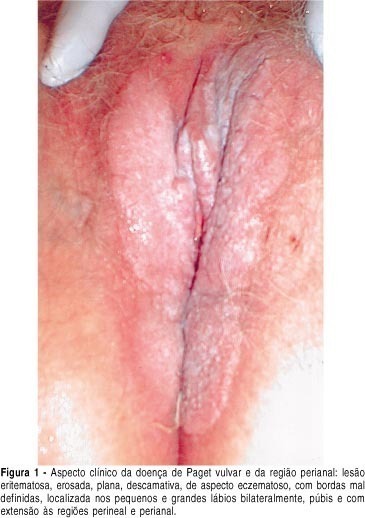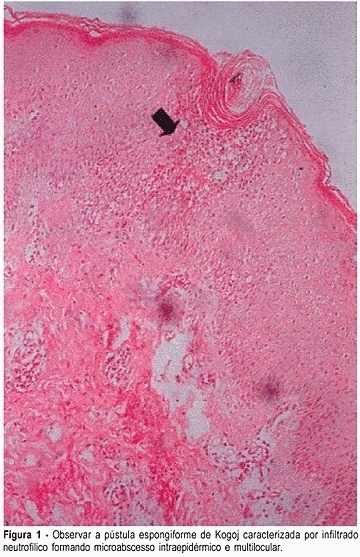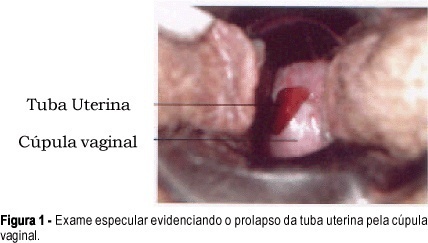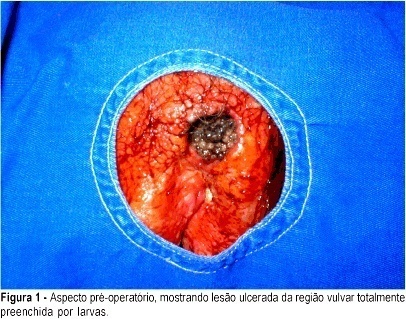Summary
Revista Brasileira de Ginecologia e Obstetrícia. 2004;26(4):329-335
DOI 10.1590/S0100-72032004000400011
Extramammary Paget's disease (EPD) is an uncommon neoplasic condition observed mostly in areas with numerous apocrine and or eccrine glands. In the woman it is most commonly seen on the vulva, although it can occur in other locations. Vulvar Paget's disease (VPD) can be classified into primary, of cutaneous origin, and secondary, of extracutaneous origin, with significant clinical e prognostic implications. Clinically VPD begins insidiously with pruritus and burning sensation. The lesion appears as a solitary patch with an eczematous, erythematous and squamous surface. This is a report of a case of a 72-year-old patient with an erythematous slightly thickened patch lesion with spots of erosion involving both the right and the left majus and minus labia, the clitoris, the pubic region, and the perineal and perianal regions. The operation performed included radical vulvectomy and bilateral inguinal lymphadenectomy. The histopathology revealed invasive Paget's disease. Immunohistochemical methods showed positive Paget cells for CEA, EMA, and cytokeratin pan. Pathogenesis and diagnosis of EPD is discussed, with differential diagnosis and reference to immunohistochemical methods. Recurrence rate is 30%, even with margin control. Experience with EPD is limited and long-term follow-up is required to exclude recurrence of the disease and development of an associated cancer.

Summary
Revista Brasileira de Ginecologia e Obstetrícia. 2004;26(2):153-159
DOI 10.1590/S0100-72032004000200011
Pustular psoriasis of pregnancy is a rare pustular dermatosis with eruptions that develop in groups of sterile pustules at the periphery of erythematous patches of the skin. Systemic symptoms include high fever, malaise, diarrhea, delirium, dehydration, tetany, and convulsions. Therapy with systemic corticosteroids, antibiotics, replacement of fluid and electrolytes is mandatory. In this report, we present the cases of two primigravidas, 23 and 28 years old, who presented pustular psoriasis of pregnancy at the 24th and 28th week of gestation. They were treated and, in the first case, a healthy 2,500-g female fetus was born vaginally, after labor induction with oxytocin at the 35th week of gestation; in the second patient, at the 37th week of gestation, after a moderate vaginal bleeding and no perception of fetal movements for 12 hours, a stillborn 2,700-g female was born after labor induction with prostaglandin.

Summary
Revista Brasileira de Ginecologia e Obstetrícia. 2003;25(10):749-751
DOI 10.1590/S0100-72032003001000009
Fallopian tube prolapse is a rare complication after hysterectomy, with approximately 80 cases described in the literature. The symptoms are nonspecific including vaginal bleeding, dyspareunia and chronic pelvic pain. The differential diagnosis must be done with granulation tissue of the vaginal cuff and vaginal carcinoma. The treatment should be individualized, and is possible to be done by vaginal, abdominal or laparoscopic approach. We report a case of a 47-year-old woman with myoma who was submitted to a vaginal hysterectomy and evolved with fallopian tube prolapse 11 months after surgery. Specular examination showed a fungating, friable and bleeding lesion at the vaginal cuff. The clinical findings suggested the diagnosis of fallopian tube prolapse. The patient was submitted to a new surgical intervention with resection of the left fallopian tube. The histologic examination confirmed the diagnosis and the patient evolved with complete remission of the symptoms.

Summary
Revista Brasileira de Ginecologia e Obstetrícia. 2003;25(10):745-748
DOI 10.1590/S0100-72032003001000008
Ehlers-Danlos syndrome is a connective tissue disease that is rarely associated with pregnancy, but with potentially fatal complications during pregnancy and puerperium, such as vascular and intestinal ruptures. It can also be associated with joint laxity and pain in women; during pregnancy there is a greater risk of prematurity, because of premature rupture of membranes and/or cervical insufficiency. Uterine rupture and inversion can also be associated with this syndrome. In the present study, we describe the case of a pregnant woman with Ehlers-Danlos syndrome, with a favorable evolution, without fetal complications and a good perinatal outcome.
Summary
Revista Brasileira de Ginecologia e Obstetrícia. 2003;25(4):291-295
DOI 10.1590/S0100-72032003000400011
Myiasis located in the vulva is a rarely described disease. The objective of the present report is to describe a case of vulvar myiasis due to larvae of Cochliomyia hominivorax. A 77-year-old woman with precarious hygienic habits presented pain, pruritus and secretions with a fetid smell in the genital region for 10 days. Gynecological examination demonstrated an ulcerated lesion in the labium majus of the vulva measuring six centimeters that extended to the mons pubis and was found to be filled with larvae. The patient progressed favorably after removal of the larvae, surgical debridement and daily dressings. Fourteen days after the debridement, she was submitted to skin flap rotation, with good local scar formation. Two months after the intervention, she remained asymptomatic. Vulvar myiasis must be considered in the differential diagnosis of infectious diseases of the vulva in patients with precarious hygienic habits.
